Nature
Since ancient times, the Hiji River has been intertwined with the lives of the people.
Its rich waters have nurtured fertile soil and abundant greenery.
The landscapes along the Hiji River change with the seasons, offering a vivid experience of nature’s cycles.
Its rich waters have nurtured fertile soil and abundant greenery.
The landscapes along the Hiji River change with the seasons, offering a vivid experience of nature’s cycles.
The Changing Seasons in Ozu Castle Town
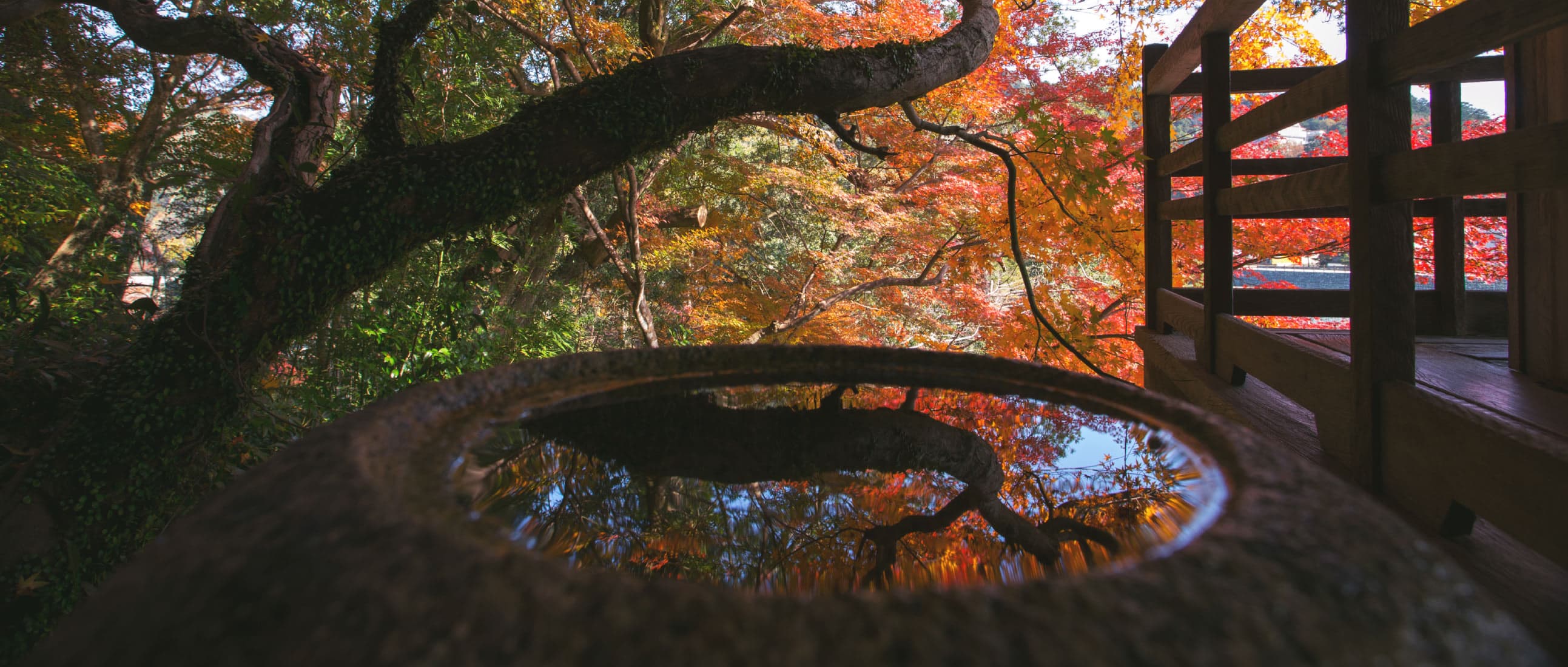
The natural colors of autumn leaves and cherry blossoms adorn Ozu’s historic architecture.
The beauty of the town evolves gracefully with the passage of time,
leaving you with a longing to return for the next season.
The beauty of the town evolves gracefully with the passage of time,
leaving you with a longing to return for the next season.
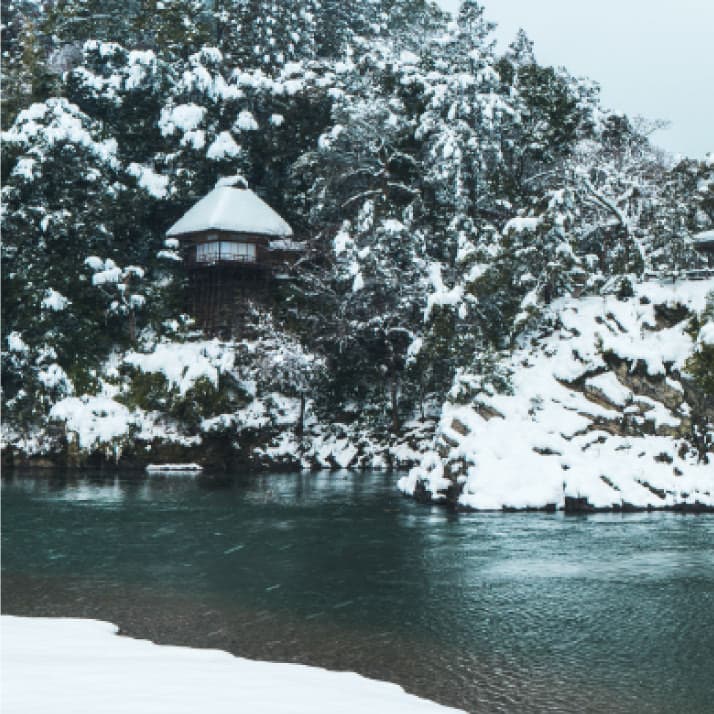
- Garyu Sanso (villa)
- Ozu, despite its temperate climate, experiences more snowfall than other regions in the area. At Garyu Sanso, where the air is crisp and pure, snow falls silently on the serene villa, creating a scene you could gaze upon forever from the veranda.
See details

- Nyoho Temple
- The modest, ancient temple is painted in the colors of autumn as the leaves fall. Walking through the carpet of autumn leaves that covers the approach to the temple, you’ll encounter grand ginkgo trees ablaze in yellow.
See details
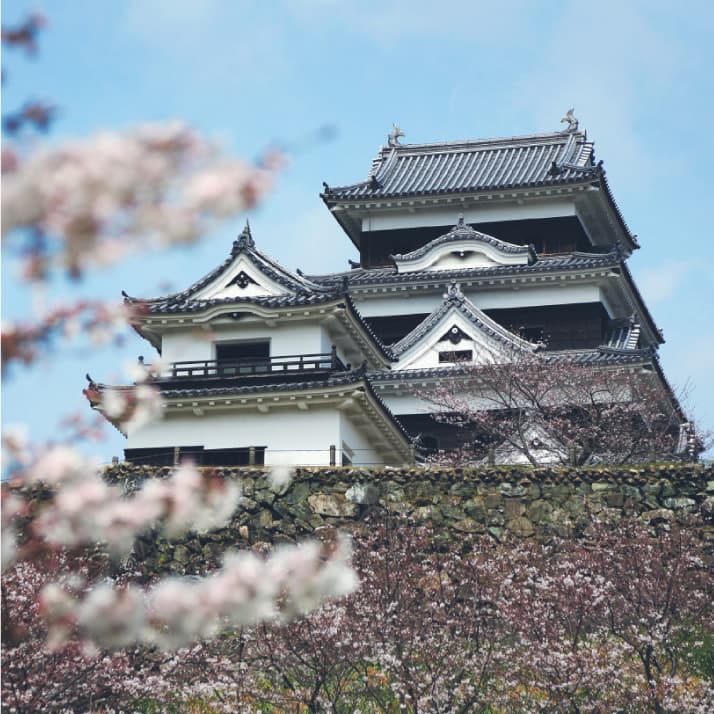
- Ozu Castle
- Cherry blossoms in full bloom surrounding Ozu Castle and the Hiji River flowing beneath. From the tower, you can see the clear blue river framed by the blossoms, signaling the arrival of spring.
See details
A city built in harmony with the Hiji River
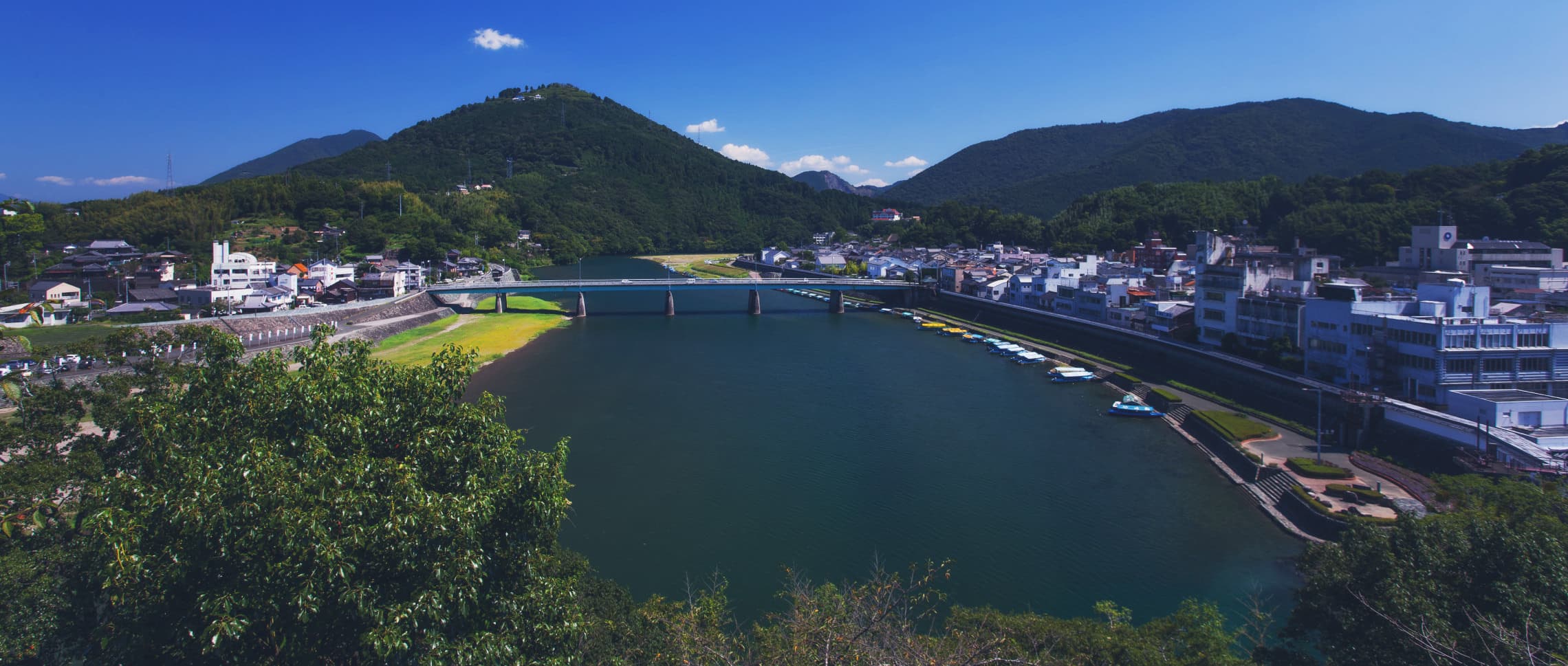
The Hiji River, an important first-class river flowing through Ozu,
is said to derive its name from the many bends resembling a bent elbow.
The river’s graceful curves have nurtured the Ozu Basin, bringing abundance to the region.
For centuries, the people who lived along the Hiji River have depended on its flow as the source of life,
a reminder of time’s eternal passage.
is said to derive its name from the many bends resembling a bent elbow.
The river’s graceful curves have nurtured the Ozu Basin, bringing abundance to the region.
For centuries, the people who lived along the Hiji River have depended on its flow as the source of life,
a reminder of time’s eternal passage.
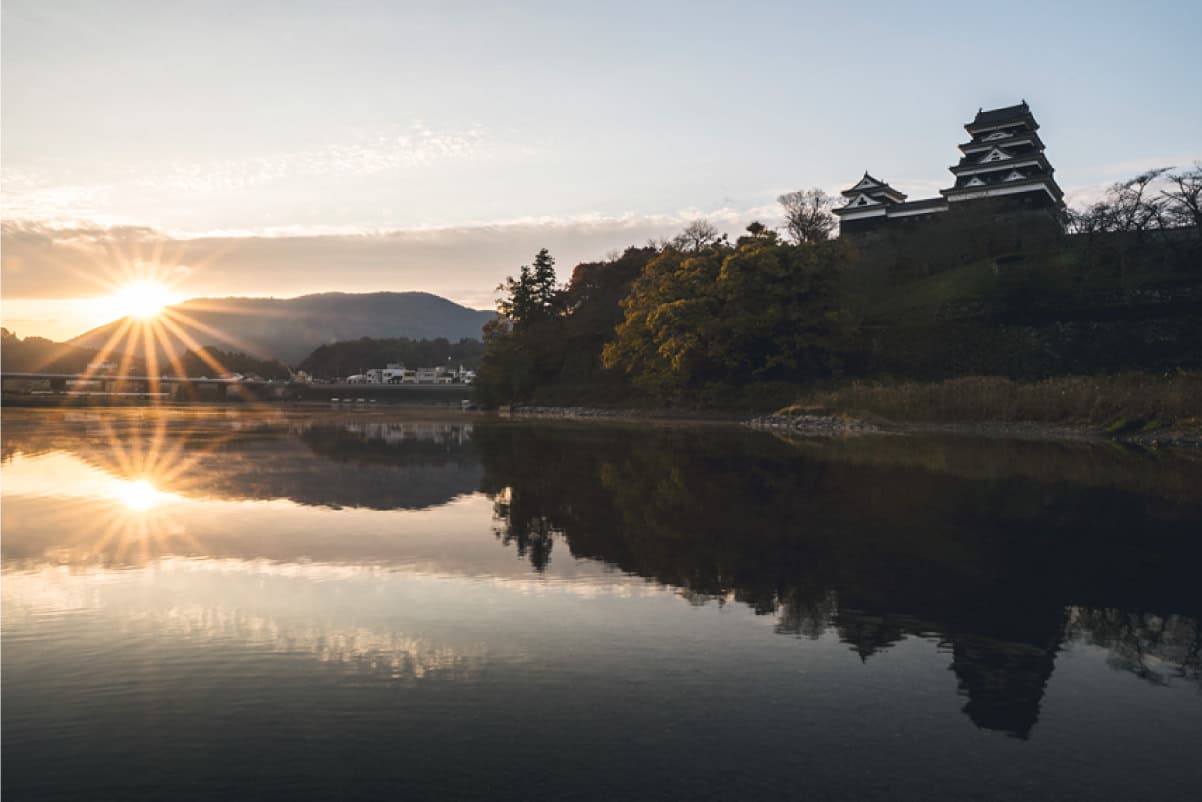
Spring is dawn, summer is night,
Autumn is dusk, winter is early morning
Autumn is dusk, winter is early morning
As renowned poet Sei Shonagon wrote in “The Pillow Book,” the early mornings of winter in Ozu are the best time to experience the town.
Morning mist flows over central Ozu
Hijikawa Arashi
Hijikawa Arashi

Near the mouth of the river in Nagahama, a natural phenomenon occurs when the air trapped in the basin turns into morning mist, flowing upriver.
From autumn through winter, this mist roars like a dragon, engulfing the town.
A rare and miraculous encounter with the “dragon of the Hiji River.”
From autumn through winter, this mist roars like a dragon, engulfing the town.
A rare and miraculous encounter with the “dragon of the Hiji River.”

Hijikawa Arashi
The morning mist winds through the red Nagahama Bridge and flows out to sea. This mystical sight can be seen from the observation park overlooking the river mouth from a small hill, particularly from October to March when the weather conditions are just right.
The Sea of Clouds Embracing the Castle Town
Another iconic winter sight in Ozu is the Sea of Clouds.
To witness it, venture out early from your lodging and climb a nearby hill.
From late autumn to winter, you can see a sea of clouds stretching out across the landscape,
with mountain peaks poking through like islands.
The sight of your breath turning white against the grand expanse of white clouds is a humbling reminder of nature’s grandeur,
a spectacle that evokes admiration.
To witness it, venture out early from your lodging and climb a nearby hill.
From late autumn to winter, you can see a sea of clouds stretching out across the landscape,
with mountain peaks poking through like islands.
The sight of your breath turning white against the grand expanse of white clouds is a humbling reminder of nature’s grandeur,
a spectacle that evokes admiration.
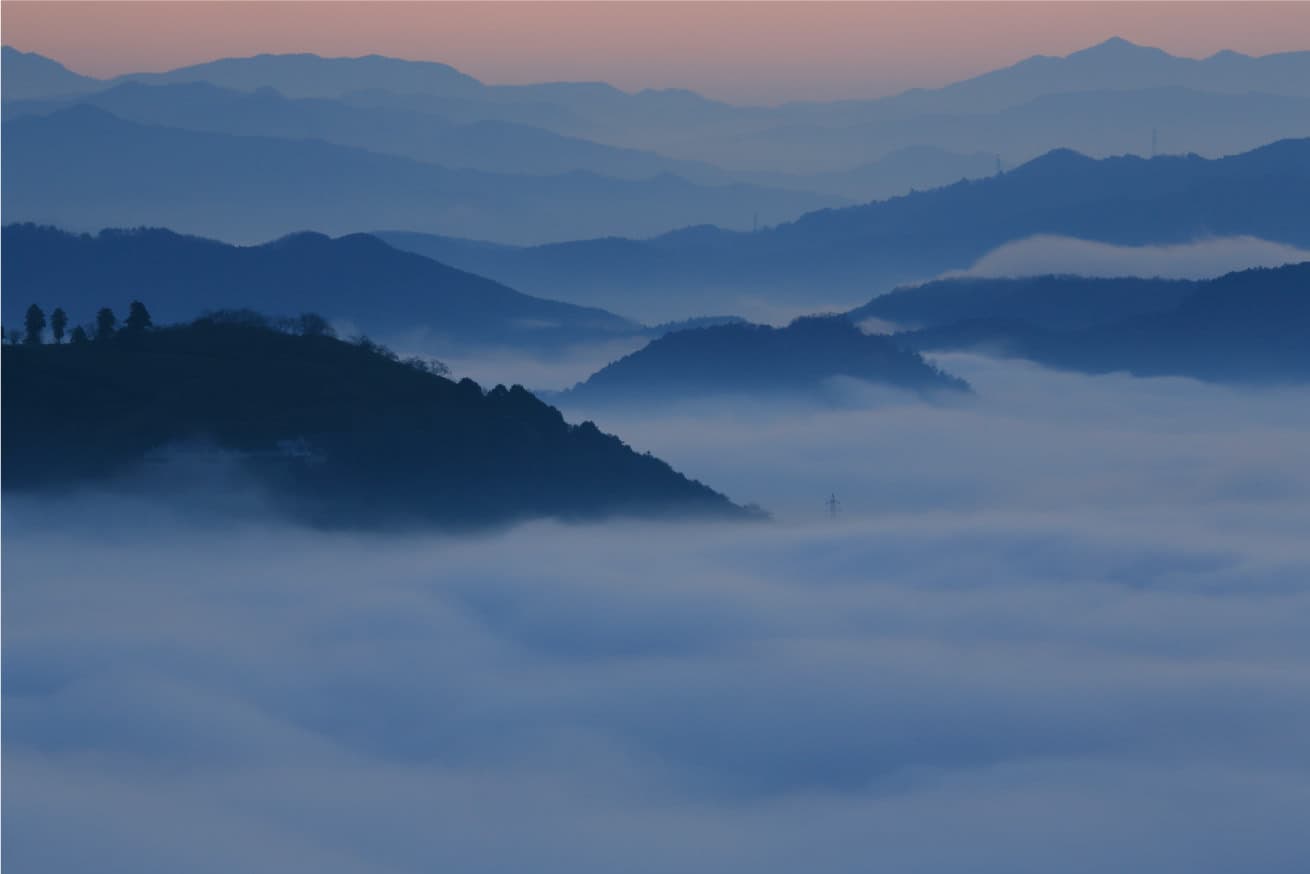
This phenomenon occurs when there is a significant temperature difference between day and night and on calm, windless days.
From October to March, the view spans from sunrise until the sun fully rises.


